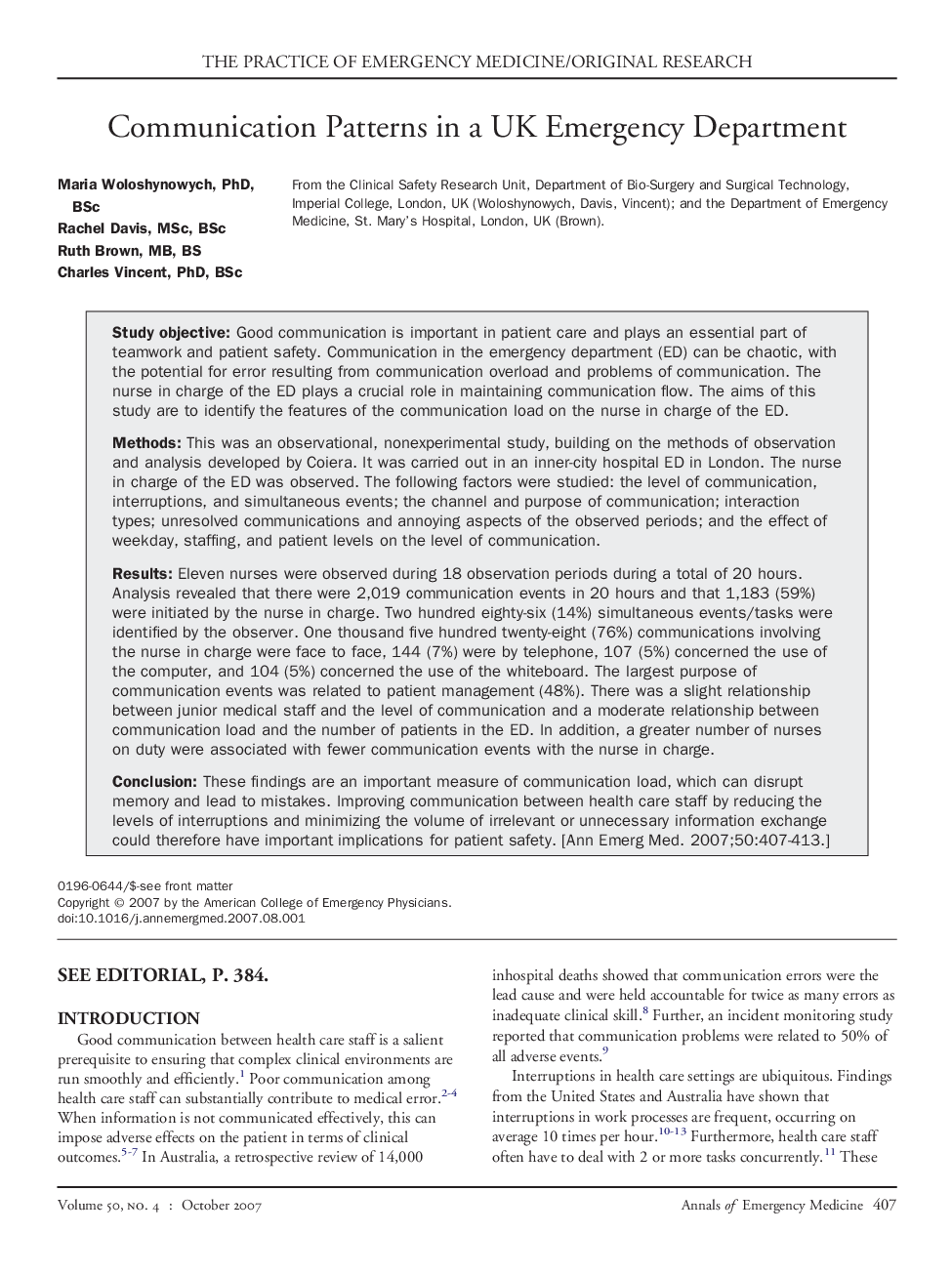| Article ID | Journal | Published Year | Pages | File Type |
|---|---|---|---|---|
| 3233714 | Annals of Emergency Medicine | 2007 | 7 Pages |
Study objectiveGood communication is important in patient care and plays an essential part of teamwork and patient safety. Communication in the emergency department (ED) can be chaotic, with the potential for error resulting from communication overload and problems of communication. The nurse in charge of the ED plays a crucial role in maintaining communication flow. The aims of this study are to identify the features of the communication load on the nurse in charge of the ED.MethodsThis was an observational, nonexperimental study, building on the methods of observation and analysis developed by Coiera. It was carried out in an inner-city hospital ED in London. The nurse in charge of the ED was observed. The following factors were studied: the level of communication, interruptions, and simultaneous events; the channel and purpose of communication; interaction types; unresolved communications and annoying aspects of the observed periods; and the effect of weekday, staffing, and patient levels on the level of communication.ResultsEleven nurses were observed during 18 observation periods during a total of 20 hours. Analysis revealed that there were 2,019 communication events in 20 hours and that 1,183 (59%) were initiated by the nurse in charge. Two hundred eighty-six (14%) simultaneous events/tasks were identified by the observer. One thousand five hundred twenty-eight (76%) communications involving the nurse in charge were face to face, 144 (7%) were by telephone, 107 (5%) concerned the use of the computer, and 104 (5%) concerned the use of the whiteboard. The largest purpose of communication events was related to patient management (48%). There was a slight relationship between junior medical staff and the level of communication and a moderate relationship between communication load and the number of patients in the ED. In addition, a greater number of nurses on duty were associated with fewer communication events with the nurse in charge.ConclusionThese findings are an important measure of communication load, which can disrupt memory and lead to mistakes. Improving communication between health care staff by reducing the levels of interruptions and minimizing the volume of irrelevant or unnecessary information exchange could therefore have important implications for patient safety.
